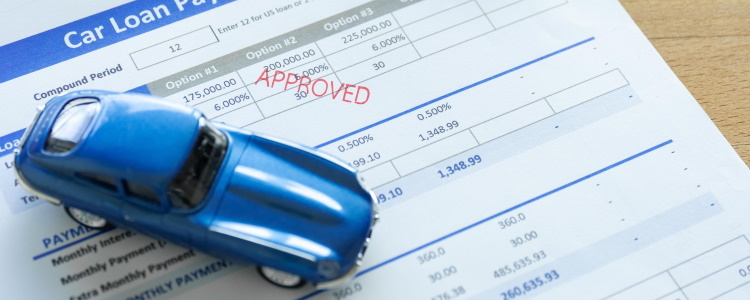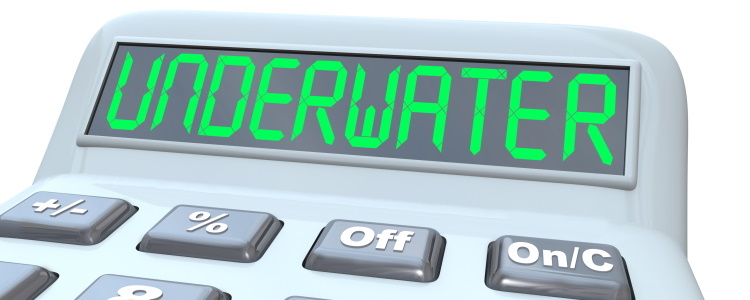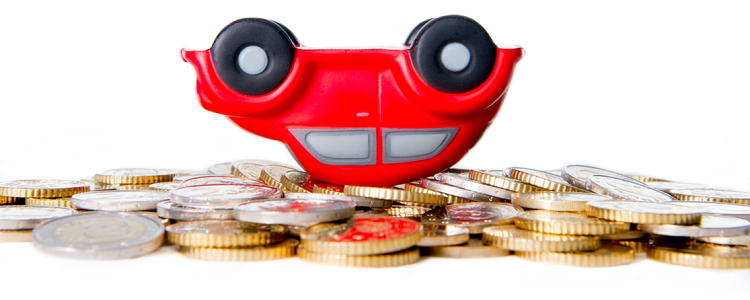In order to trade in a car that you still owe on, you have to pay off your loan either naturally or with a dealer’s offer. If you're underwater on your loan, there isn't enough equity in your vehicle to cover this cost. Sometimes, a dealership may offer to pay off your loan and let you roll over the negative equity. This sounds great in theory, but it could get you stuck on the trade-in treadmill.
What Is the Trade-In Treadmill?
 If you have a trade-in with negative equity, where you owe more on the loan than the car is worth, you may be looking for a lender that allows you to roll over your auto loan. Rolling over the negative equity from one loan into the next may allow you to get another vehicle, but it costs you in the long run.
If you have a trade-in with negative equity, where you owe more on the loan than the car is worth, you may be looking for a lender that allows you to roll over your auto loan. Rolling over the negative equity from one loan into the next may allow you to get another vehicle, but it costs you in the long run.
Rolling over your car loan means that your new lender pays off your existing auto loan, and adds the amount of negative equity to your new loan.
For example: If you're trading in a vehicle for $4,000 but you still owe $6,000 on your loan, the new lender adds the $2,000 not covered by the value of your car to the loan on another vehicle. If your new auto loan is for a $10,000 car, you're essentially taking out a $12,000 loan for it. This puts you in a negative equity position right from the start, as you owe more on the new loan than the vehicle's actual cash value (ACV).
Where this becomes a problem is when you trade in your latest car and haven't gained an equity position. Again, a lender may allow you to roll over the negative equity – maybe $2,500 worth this time – which leaves you owing even more right from the start.
This is the trade-in treadmill: you get stuck in a typically ever-increasing cycle of negative equity that just keeps rolling forward. It can be difficult to get off of.
Ways to Avoid Negative Equity
In order not to get stuck in this negative equity cycle when you trade in your next vehicle, it's a good idea to wait until there's equity in your car before you trade it in, or at least until there’s no negative equity. If you're worried about how to do this, there are a few options you can choose from to start paying down your loan faster without breaking the bank.
Here are four ways you can pay more on your auto loan:
- Pay more each month. It doesn't have to be a lot, every extra $10 or $20 you can set aside to add to your monthly payment helps. To get your vehicle into an equity position as quickly as you can, try paying any extra you can afford for your car loan that you can each month.
- Make a half payment every two weeks. When you do this, you actually end up making 13 monthly payments in a year, which brings your vehicle into an equity position faster. You shave an extra payment off each year of your loan term if you do this.
- Split your payments. Payment splitting allows you to save money in interest charges every month, which reduces negative equity little by little. To do this, pay part of your loan payment (whatever percent of it you wish, whether a lot or a little) at the beginning of each month, and pay the rest on or near your due date. This lowers the amount of interest charges that accumulate between the two payments.
- Round up your payment. If you owe $384.52 each month for your auto loan, round your payments up to an even $400 or more.
Paying your loan faster and quicker than planned can help you enter an equity position. Not only do you increase your chances of having equity in your car at trade-in time, but you save money in interest charges each month as well.
Additionally, you can keep your vehicle off the trade-in treadmill right from the start by making a significant down payment, among other things, on your auto loan. The more you put down, the less you have to borrow, and the shorter the gap you have to close between the car's ACV and your loan balance.
Why Equity Matters in a Trade-In
Now that you know how to save money and fend off negative equity as quickly as possible, you may be asking yourself, "why does it matter if there's equity in my vehicle?"
Having equity in your car makes it an asset, not a liability. If there's equity in your vehicle when you trade it in, you may not have to roll over any negative equity and you can avoid the trade-in treadmill.
Plus, having equity means that you can take any extra cash value from your car to use as all or part of a down payment on your next auto loan. This means starting with a better chance to retain equity and saving yourself money overall.
Are You Ready to Trade Up to a Different Car?
If you're ready to trade in your vehicle and step into something different, but are worried about your credit score getting in the way, don't be! Here at Auto Credit Express, we know where to find the special finance dealers that are signed up with the lending resources you need.
To get started on the path toward your next car loan now, simply fill out our fast, free, and zero-obligation auto loan request form. After you submit it, we'll get to work matching you to a local dealership.














